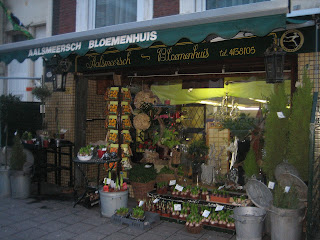Due to the many attacks on the place, very little of the original structure still stands. Most of the site is full of foundations from earlier parts of the buildings that were destroyed.
Melrose Abbey also holds a graveyard and various memorial plaques on the walls throughout the structure. I was really excited because a lot of the writing is in Latin-I had an easier time deciphering that than I did the bits in Scots! One of the most famous supporters of the Abbey was Robert the Bruce, who was king from 1306-1329. He's a legendary hero in Scottish history, and led the Scots during the War of Scottish Independance. Before his death, Robert requested that his heart be removed from his body when he was dead and taken on crusade (which he had failed to do during his lifetime) and then buried in Melrose Abbey (his body is buried elsewhere).
His wished were carried out, and the embalmed heart of Robert the Bruce is now interred at the abbey. It was excavated during restoration work in the 1990s, and reburied with this commemorative stone. It says A noble hart may have nane ease Gif freedom failye.
The construction of the abbey is really beautiful, and a lot of the intricate work around the windows and inside alcoves is still in pretty good shape.
At the corners of each window arch were faces, and each one was making a different expression:
Throughout the ruins of the other wings of the complex were little signs about life as a monk and what each part of the building would have been used for. I listened to an audio guide provided by Historic Scotland, which preserves the abbey, which was really interesting. This section of foundation was for the abbey kitchen--my favorite room!
One of the sixteenth century buildings has been converted into a museum about the place, so we explored in there as well. This sign was on the fence as we went inside:
I thought it was funny, because it's not often one needs to be warned about medieval culverts. It was an actual warning though-the culverts weren't roped off or anything.
 |
| one of the culverts |
The fort was under the control of Governor Agricola, which I was really excited to find out. When I took Latin we used the Cambridge Latin Course, which uses a soap-opera-esque series of stories to teach vocabulary and grammar. In the later textbooks, the main character goes to Britain and Agricola is featured in the story, as is his successful conquering of Scotland. Naturally, this had to be explained to everyone I was with because otherwise the jumping up and down I was doing looked a little nuts.
 |
| a plan of the Roman fort |
 |
| the workings of a sixteenth century abbey clock |
I'll leave you with an excerpt from The Lay of the Last Minstrel, written by Walter Scott:
f thou would'st view fair Melrose aright,
Go visit it by the pale moonlight;
For the gay beams of lightsome day
Gild, but to flout, the ruins grey.
Where the broken arches are black in night,
And each shafted oriel glimmers white;
When the cold light's uncertain shower
Streams on the ruin'd central tower;
When buttress and buttress, alternately,
Seem fram'd of ebon and ivory;
When silver edges the imagery,
And the scrolls that teach thee to live and die;
When distant Tweed is heard to rave
And the owlet to hoot o'er the dead man's grave
Then go—but go alone the while—
Then view St. David's ruin'd pile;
And, home returning, soothly swear,
Was never scene so sad and fair!






















































